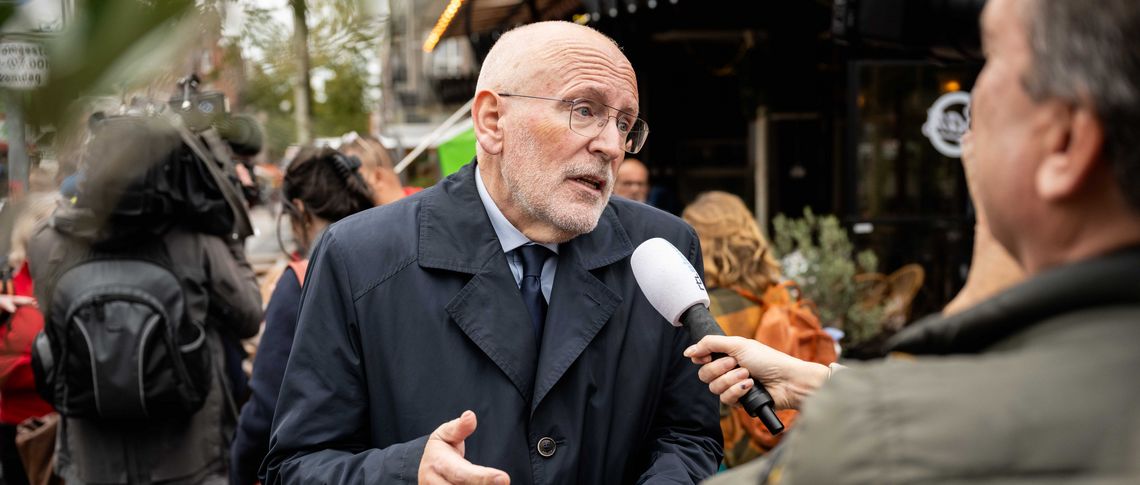The Netherlands faces a new political pressure test this week. The continual in-fighting between the coalition parties, formed by the radical right-wing populist Freedom Party, the market-liberal Liberal Party, a new social-conservative party New Social Contract and the agrarian populist Farmer-Citizen-Movement, led to the collapse of the government before the summer, forcing the country to hold new elections on October 29.
Since the 2023 elections the Dutch political landscape has seen major changes: the right-wing parties that supported the Schoof government are all seeing major losses: they had a majority of 88 out of 150 seats in 2023, now they are polling between 47 and 52 seats together. Meanwhile, the Christian-Democratic Appeal, the traditional centre-right governing party of the Netherlands, that performed poorly in the 2023 elections is resurgent in the polls. The social-liberal party Democrats 66 is also a rising in the polls. There is yet another right-wing populist party, JA21, which is also growing in support.
And the GreenLeft-Labour joint list? Polling at around 22-26 seats. Almost exactly the same as they got in 2023. Despite the chaos of the last years, there is no movement in the polls. What does this mean for the left in the Netherlands?
What matters to voters
The Netherlands has a diverse multiparty system. In the United Kingdom, effectively a two-party system, dissatisfaction with the performance of a centre-right government means that dissatisfied voters swing to the centre-left opposition party. But in the Dutch system dissatisfied voters can opt for other parties in the opposition. In this case, the Christian-democrats, the social-liberals and the right-wing populists of JA21 are safe havens for dissatisfied voters who are leaving the right-wing parties.
These are still right-wing voters, they may be dissatisfied with the government, but they still favour limits to immigration, market solutions and economic growth over environmental protection. The GreenLeft-Labour list has a clear left-wing profile on economic, migration and environmental issues: the party promises to build affordable homes for renters, to take strong measures to reduce pollution from cattle farms, to raise incomes for teachers and nurses and to ensure that the asylum policy is humane. So, why would these right-wing voters vote for a left-wing alternative?
On housing the left no longer has issue-ownership either, a legacy of the participation of the Labour Party in a coalition with the Liberal Party that abolished the housing ministry and imposed punishing taxes on social housing corporations.
The conflicts in the right-wing Schoof government have ensured that migration has remained a key issue. And the radical right-wing populist Freedom Party is monopolising the issue. The most characteristic issue for the GreenLeft-Labour joint list, led by the former EU climate commissioner, Frans Timmermans, is climate, but this is not a top priority for Dutch voters. On housing the left no longer has issue-ownership either, a legacy of the participation of the Labour Party in a coalition with the Liberal Party that abolished the housing ministry and imposed punishing taxes on social housing corporations. On top of that, the right has been successfully able to blame asylum seekers and other migrants for the lack of housing in the Netherlands.
A third issue that has to be mentioned to explain the lack of movement in the polls is Frans Timmermans’ lack of popularity. After his success in the 2019 European elections left-wing insiders saw a potential prime minister in the vice-president of the European Commission. He was appointed leader of the joint list without serious contestation. While about half of Dutch voters believe that he would be able to represent the Netherlands well internationally, only about a third of voters feel that he understands people, find him sympathetic or see him as a reliable prime minister. Under this leader, it seems unlikely that the GreenLeft-Labour joint list would be able to expand its appeal.
Chances are not bad
The 2023 elections were the worst election for the Dutch left in 100 years. Even if one would take a very expansive definition of left-wing and include the GreenLeft-Labour joint list, the social-liberal D66 as well as a bunch of smaller parties (the Socialist Party, the deep green Party for the Animals, the pan-European Volt, the Christian-social ChristianUnion and the party of, for and by immigrants DENK) the Dutch left got 50 seats out of 150. The parties had a majority in 2012. Current polls give these left-wing parties about 54-59 seats. Most of the potential gains come from D66, which has been able to attract about four seats from the centre-right parties in the Schoof government by adopting a nationalist rhetoric and pro-market policy. The other small parties of the left (socialists, the Party for the Animals, Volt, the ChristianUnion or DENK) are all polling between 2 and 3 per cent of the vote.
Yet, despite the poor electoral performance for the left as a whole, the chances of one or two of these parties entering government are not bad: most parties have vetoed the radical right-wing Freedom Party from entering government again after two years of conflict and proposals that run against basic principles of democracy and the rule of law. It seems unlikely that this party would enter government even if it remains the largest party in parliament.
Dutch voters are extremely volatile, and polling indicates that more than half of all voters have not made up their mind.
Given the fragmented landscape, forming a government would not be easy. One also has to remember that in the week running up to the elections the polls can shift. Yet, two coalition options seem most likely: either the Christian-Democrats, D66 and the Liberal Party will form the core of a new government, joined by other parties of the centre and the right; or the Christian-Democrats, D66 or GreenLeft-Labour joint list will form the core of a new government joined by other parties of the left and the centre. If the GreenLeft-Labour list becomes largest party in the government, Timmermans may even become prime minister. The polls give both the GreenLeft-Labour list and the Christian-Democrats a 50 per cent chance at becoming the second largest party in parliament after the Freedom Party (and with that the largest party of a possible coalition).
Dutch voters are extremely volatile, and polling indicates that more than half of all voters have not made up their mind. A lot can change in the last week of the campaign and these last shifts can really determine which coalitions are possible. Until election night, it would be impossible to say with certainty where the country is headed. But it seems likely that the next government will be more future-oriented than the current one.






